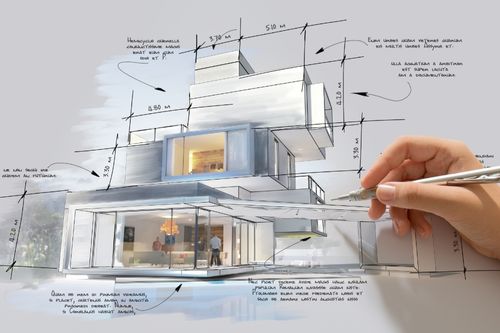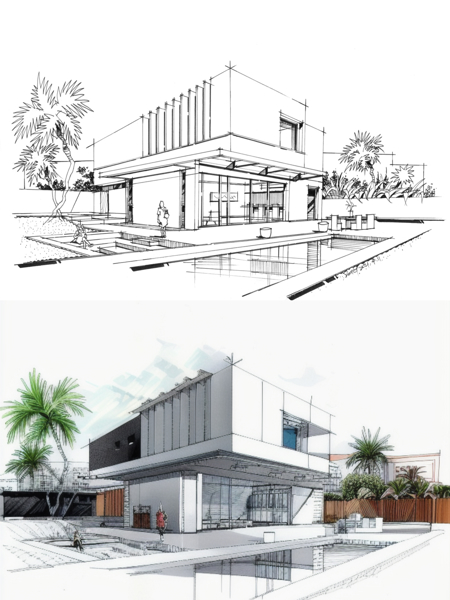Just How CDA Architects Incorporate Creative Thinking and Functionality in Modern Style
Just How CDA Architects Incorporate Creative Thinking and Functionality in Modern Style
Blog Article
Recognizing the Collaborative Refine In Between Architects and Designers in Modern Building And Construction Projects
The collaborative procedure in between designers and engineers is important in contemporary building projects, as it integrates layout intent with engineering feasibility. This collaboration not just influences the aesthetic and useful facets of a task however also plays an important role in resolving sustainability difficulties. By employing reliable interaction techniques and leveraging advanced technologies, such as Building Information Modeling (BIM), teams can work a lot more cohesively. However, the details of this collaboration often existing special obstacles that can prevent progression. Discovering these dynamics exposes understandings that could substantially influence project outcomes and total market criteria. cda architects.
The Importance of Collaboration
The joint harmony in between engineers and designers is necessary for the effective realization of any type of building job. This collaboration combines distinctive proficiency and viewpoints, making it possible for the integration of innovative layout with sensible design remedies. By collaborating, designers and engineers can make sure that a job not just fulfills visual and useful needs however likewise complies with security, sustainability, and monetary restrictions.
Partnership fosters a shared vision, facilitating the alignment of objectives and assumptions from the beginning. This alignment is crucial in addressing possible obstacles and mitigating dangers that might arise throughout the job lifecycle. A collaborative technique enables for the efficient allocation of sources, optimizing both time and expense.
The significance of cooperation prolongs to the iterative procedure of layout and building, where feedback from designers can inform building decisions, causing more practical and sustainable styles. Alternatively, architects can motivate engineers to assume creatively regarding just how to accomplish architectural integrity without jeopardizing imaginative intent. Inevitably, the collaborative connection in between architects and engineers is not just useful; it is basic to the creation of top notch, useful, and innovative built environments that meet the requirements of culture.
Interaction Techniques and Tools
Efficient interaction strategies and tools are crucial for fostering collaboration between designers and designers throughout the task lifecycle. Developing clear networks of interaction is necessary to make sure that all group members are lined up with task purposes, timelines, and responsibilities. Regular meetings, both in-person and virtual, offer chances for stakeholders to talk about progression, address problems, and make notified choices.

Furthermore, taking on collective interaction tools, such as Slack or Microsoft Teams, enables for instant messaging, data sharing, and recurring discussions, promoting an extra dexterous feedback to arising problems. Paper administration systems additionally play a vital role in arranging task paperwork, making certain that all employee have access to the most up to date information.
Shared Goals and Job Vision
An unified project vision works as the structure for successful partnership between engineers and designers (cda architects). This common vision not just aligns the efforts of both parties however likewise develops a common see it here framework for decision-making throughout the project's lifecycle. By verbalizing clear goals, stakeholders can successfully browse the intricacies of modern-day building and construction tasks, ensuring that both visual and functional demands are fulfilled
Developing common goals involves open discussion and a comprehensive understanding of each self-control's contributions. Architects generally focus on design intent, spatial relationships, and user experience, while designers stress architectural stability, systems functionality, and compliance with regulations. When these viewpoints are straightened, the outcome is a cohesive project that follows both imaginative ambitions and technical feasibility.
Moreover, a distinct job vision fosters accountability amongst group participants, encouraging each individual to take possession of their function in achieving the wanted result. Regular check-ins and joint workshops can additionally reinforce this dedication, permitting changes to be made as the job evolves. Inevitably, a shared vision not just improves teamwork yet also boosts the high quality of the last deliverable, resulting in successful project conclusion.
The Role of Modern Technology
Leveraging technology has ended up being crucial in enhancing collaboration between engineers and designers. Structure Details Modeling (BIM) stands out as a crucial technology, allowing both architects and engineers to create comprehensive 3D designs that encapsulate style intent and structural stability.
Furthermore, cloud-based platforms make it possible for smooth partnership, allowing task stakeholders to gain access to and update project data from anywhere. This fosters a culture of openness and responsibility, as changes can be tracked and reviewed in real-time. In addition, mobile applications additional enhance interaction, supplying on-site teams with prompt access to learn this here now task specs and updates.
Emerging technologies such as artificial knowledge and artificial intelligence are additionally beginning to play a role in anticipating analysis, helping groups determine potential problems before they arise. Inevitably, the function of modern technology in architecture-engineering cooperation not just boosts process effectiveness yet likewise boosts development, leading to even more successful job end results. By embracing these technical advancements, designers and engineers can make sure a more natural and productive collective process throughout the building and construction lifecycle.
Study in Effective Partnerships
Various instance studies highlight the extensive effect of efficient collaborations in between engineers and designers on project outcomes. One noteworthy instance is the cooperation on the High Line in New York City, where landscape architects, engineers, and metropolitan coordinators collaborated to change an abandoned rail line into a vibrant public park. This multidisciplinary technique not just improved the visual high quality however likewise made sure architectural security and ecological sustainability.

The Burj Khalifa in Dubai additionally demonstrates the significance of collective initiatives - cda architects. The integration of style and design competence made it possible for the job group to attain unprecedented elevations while sticking to safety guidelines and aesthetic vision
These instances emphasize the significance of interaction, trust fund, and shared objectives. In today's complicated building and construction setting, such partnerships are vital to browsing difficulties and supplying jobs that meet both useful and visionary goals.
Final Thought
To conclude, the partnership in between engineers and designers is important for the success of modern construction tasks. Efficient interaction techniques, a shared project visit site vision, and the combination of sophisticated innovations are important components that facilitate this partnership. By fostering a culture of accountability and leveraging devices such as Structure Details Modeling (BIM), groups can navigate job complexities, making sure that visual, functional, and sustainability objectives are accomplished. Eventually, this synergy results in innovative and effective task results.
Report this page